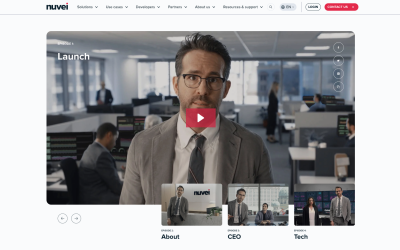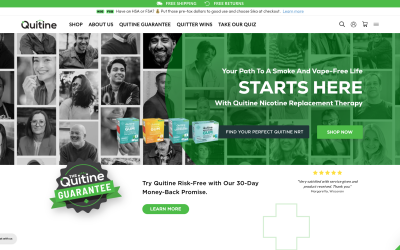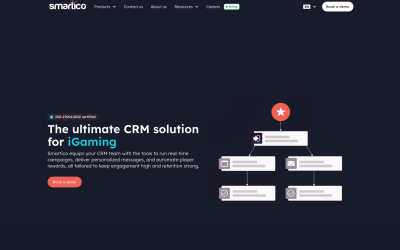Just as Sherlock Holmes unraveled mysteries with keen observation, you’re about to unlock the enigma of exit rates on your website.
You’ll see that they’re not just arbitrary figures but clues to where your visitors lose interest. By understanding the story behind these numbers, you’re equipped to make changes that matter.
You’ll find patterns in the data that reveal which pages engage your audience and which ones may need a makeover.
It’s about getting to the heart of user behavior, and you have the tools to do just that.
So, ready to delve into the analytics and transform those exit rates into opportunities for retention?
Let’s start the journey of turning your visitors into loyal fans.
Key Takeaways
- Exit rates in Google Analytics measure how often visitors leave a page after visiting other pages.
- Monitoring exit rates can help identify areas for improvement and optimize user experience.
- High exit rates on checkout pages may indicate issues that need to be addressed.
- Additional tools like heatmaps, session recordings, and on-site surveys can provide insights into why exits happen and how to fix them.
Learn the importance of exit rates with Rankstar
→ Discover the hidden truths of Exit Rates in our latest article on RankStar!
Gain insights into visitor behavior and uncover actionable strategies to reduce exits. Don’t let bouncing visitors slip away—learn how to optimize your site’s performance. Dive into the analytics and transform exits into engagement. Elevate your digital presence by mastering the secrets behind Exit Rates today!

Deciphering Exit Rate Metrics
You’ll see that every page on your site has its own exit rate, a crucial metric revealing the percentage of visitors who leave after browsing more than one page. This figure is pivotal for understanding user behavior. It’s calculated by dividing the total number of exits by the number of pageviews the page receives.
In Google Analytics, you’ll find these numbers under the ‘Behavior’ section. Pay close attention to this data; it tells a story about your content’s effectiveness and the user experience you’re delivering.
A high exit rate could signal that your page isn’t meeting visitors’ expectations or that they’ve completed their desired action. Analyze these rates in context to make informed decisions on design, content, and usability improvements.
Significance of Exit Rate Analysis
Analyzing your website’s exit rates is crucial, as it directly impacts your ability to identify and rectify pages that might be pushing visitors away. Here’s why you should pay attention:
- Data-Driven Decisions:
- Pinpoint Problem Areas: High exit rates on specific pages can signal content or usability issues.
- Improve User Experience: Adjustments based on exit data can lead to a smoother website journey.
- Conversion Optimization:
- Reduce Abandonment: Recognize and fix exit points in conversion funnels to boost completion rates.
- Enhance Retention: Lowering exit rates increases the chances of visitors staying engaged.
Keep in mind, exit rate analysis isn’t about chasing a zero rate but understanding user behavior to enhance their experience and your site’s performance.
Contextualizing High Exit Scenarios
While high exit rates often signal a problem, you need to consider the page’s purpose before jumping to conclusions. For instance, a high exit rate on a ‘Thank You’ page isn’t alarming—it’s expected.
However, if you’re seeing spikes on a checkout or product page, that’s a red flag. It’s crucial to analyze user paths and page content. Are there broken links, confusing navigation, or slow loading times? Perhaps your call-to-action isn’t compelling enough.
Dive into Google Analytics to scrutinize the exit rates against pageviews and user flow. Look at the exit rates in the context of the overall session—what happened before the user reached that exit point?
Use these insights to make data-driven decisions, optimizing pages to lower exit rates where it truly matters.
Strategies to Mitigate Exit Rates
Effective strategies can lower your site’s exit rates by addressing user experience issues and streamlining navigation. Here’s how you can make your website more engaging:
- Improve Page Content
- Use analytics to identify content performance gaps
- Optimize readability with subheadings and bullet points
- Enhance User Engagement
- Incorporate interactive elements like polls or videos
- Encourage users to explore related content through internal linking
Remember, data is your compass:
- Regularly review your analytics to understand where and why users are exiting.
- Conduct A/B testing to see which changes effectively reduce your exit rates.
Exit Rate Versus Bounce Rate
You might find it confusing to distinguish between exit rate and bounce rate, but they’re critical metrics that serve different purposes in analyzing your website’s performance.
The exit rate is the percentage of all pageviews that were the last in the session, revealing how often users left your site from that page after viewing others.
In contrast, bounce rate is the percentage of single-page sessions, showing how often users left your site from the entrance page without interacting further.
Accurate interpretation of these metrics is crucial. A high bounce rate might indicate irrelevance or poor user experience on the landing page, while a high exit rate on a specific page suggests potential issues in content, navigation, or calls to action.
Analyzing both helps you optimize your site effectively.
Frequently Asked Questions
How Does the Design and Layout of a Webpage Influence Its Exit Rate, and What Design Principles Can Be Applied to Reduce Unnecessary Exits?
Your webpage’s design affects its exit rate; cluttered layouts confuse users. Apply clear navigation, fast load times, and engaging content to reduce exits. Analyze data to tweak and improve your design continuously.
Are There Specific Times During the Day or Week When Exit Rates Tend to Increase, and How Can This Information Be Leveraged to Improve Website Performance?
You’ll find exit rates may peak at certain times, reflecting user patterns. By analyzing this data, you can tailor website updates or promotions to keep visitors engaged during these critical periods.
How Do Exit Rates Differ Among Various Traffic Sources (E.G., Organic Search, Social Media, Direct Traffic), and What Strategies Can Be Employed to Optimize for Each Source?
You’ll find exit rates vary by traffic source. Organic search may differ from social media or direct traffic. Analyze each to tailor strategies, reduce exits, and optimize engagement for your site’s audience.
In What Ways Can Technical Issues Such as Page Load Speed or Mobile Responsiveness Contribute to Higher Exit Rates, and What Tools Can Help Identify These Issues?
Technical issues like slow page load speed or poor mobile responsiveness can spike your exit rates. Tools like PageSpeed Insights and Mobile-Friendly Test can pinpoint these problems for you to address.
How Does the Interplay Between Content Quality, Relevance, and Exit Rates Affect the Overall User Experience, and What Content Strategies Can Be Implemented to Engage Users More Effectively and Reduce Exit Rates?
You need to assess content quality and relevance to improve user experience. Implement strategies like A/B testing and user feedback to refine content, keeping users engaged and potentially reducing exit rates.
Conclusion
You’ve now unlocked the mystery of exit rates and their impact on user engagement. Remember, high exit rates aren’t just red flags; they’re opportunities for optimization.
Analyze the context, streamline the user journey, and refine your content. Keep an eye on the data—let it guide your tweaks and tests.
By strategically reducing exit points, you’ll not only retain visitors but also convert them into loyal users.
It’s time to turn those exits into entrances.



































